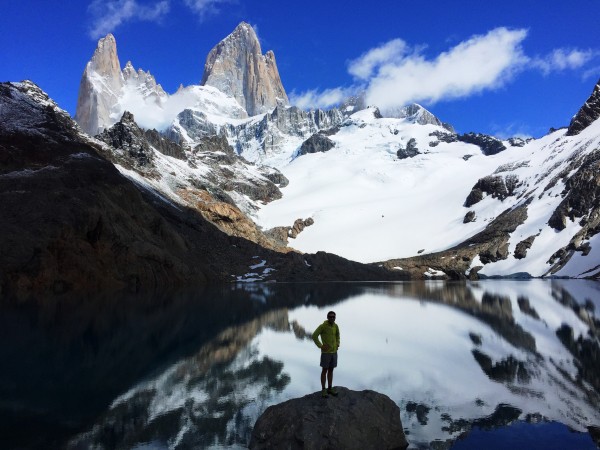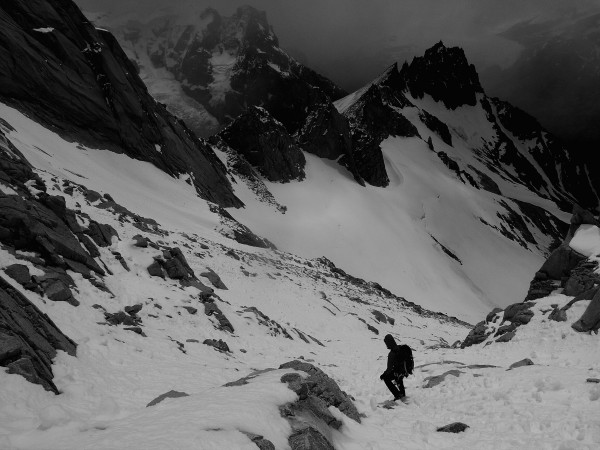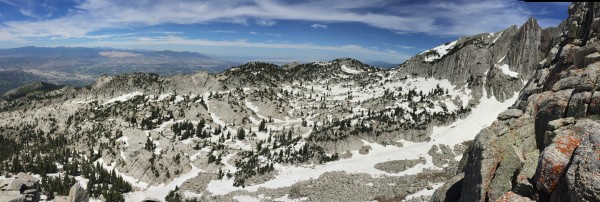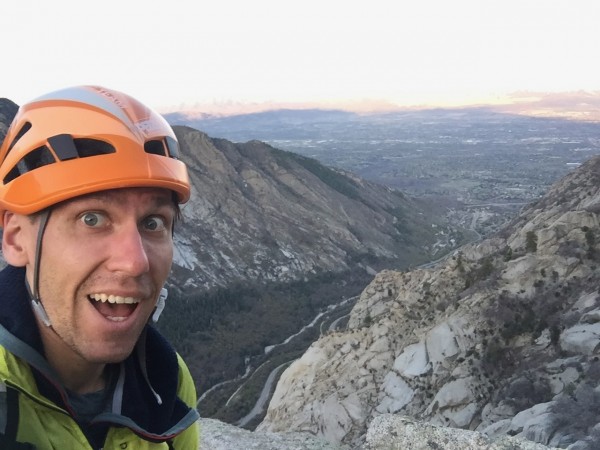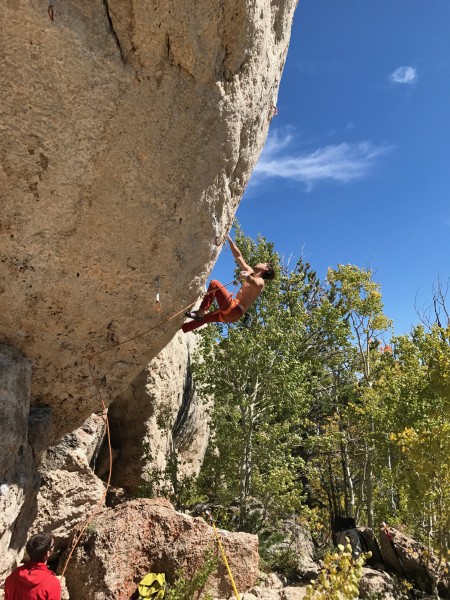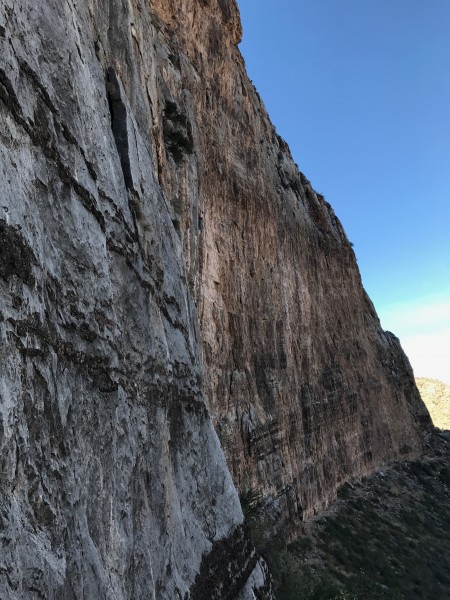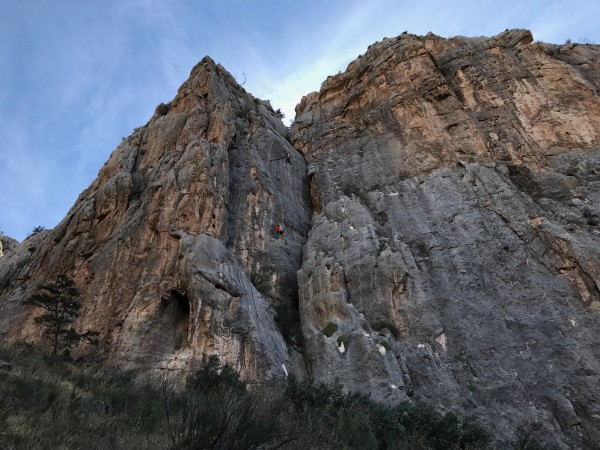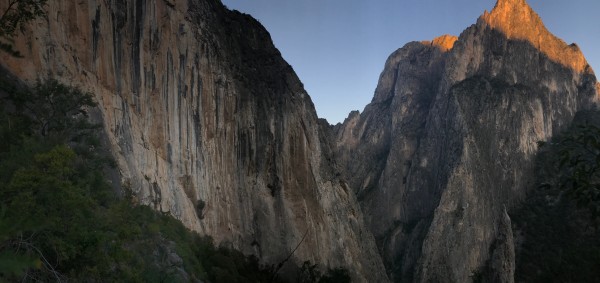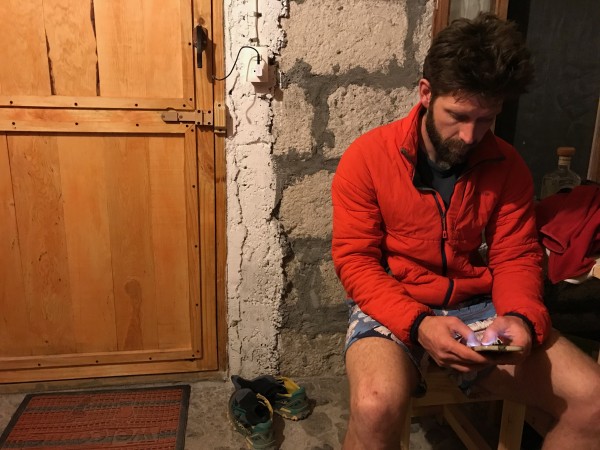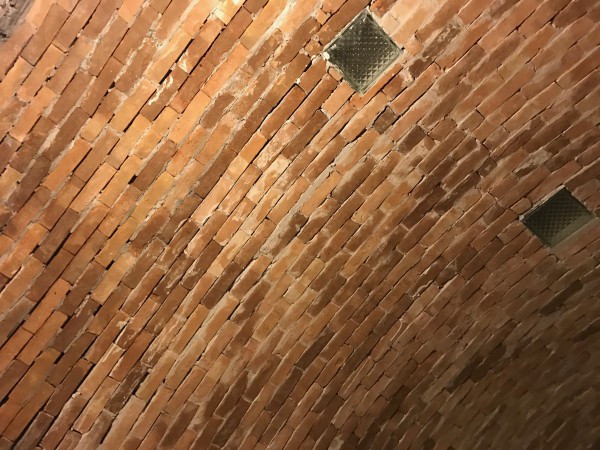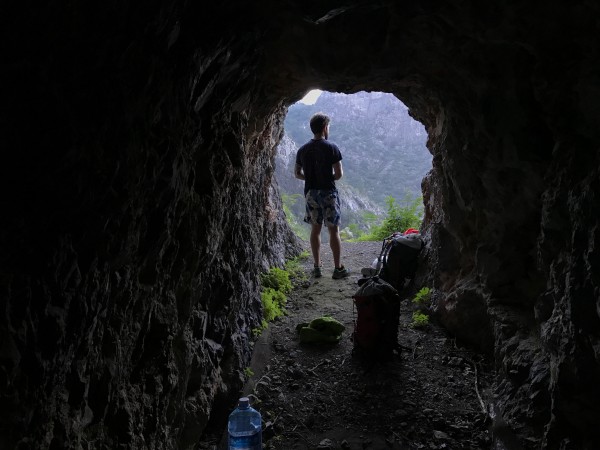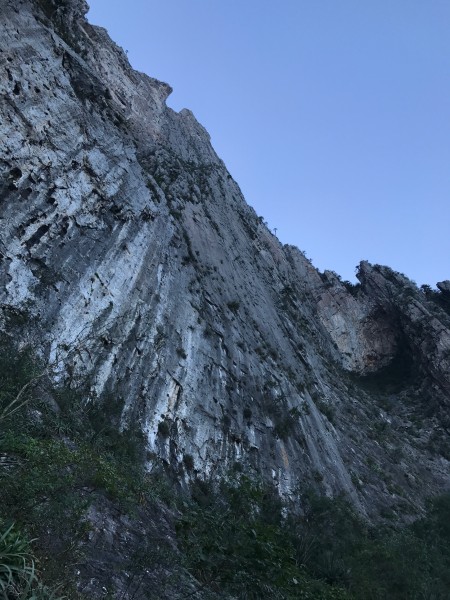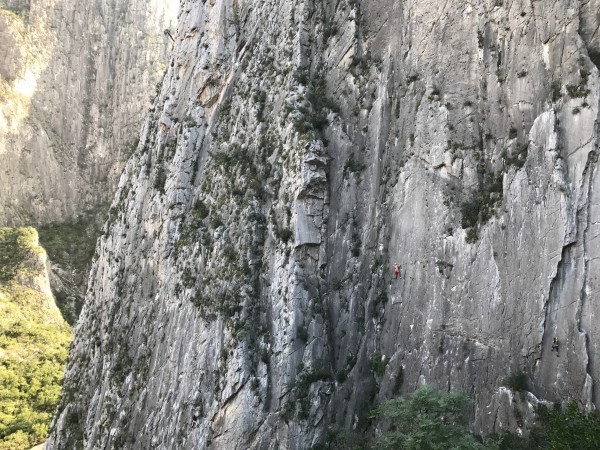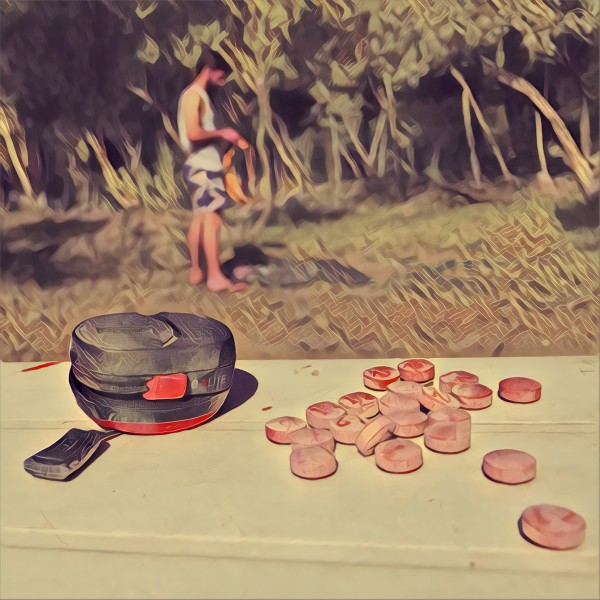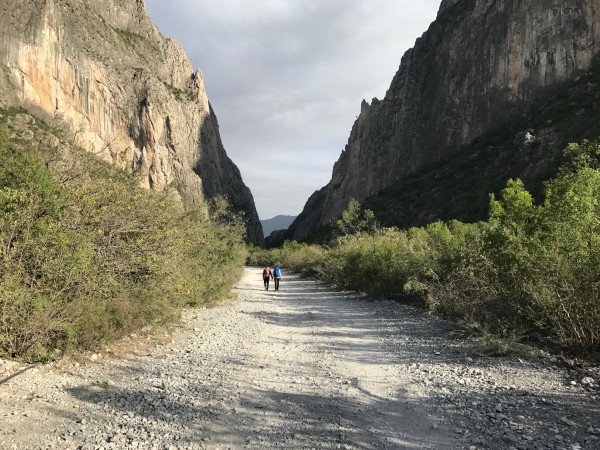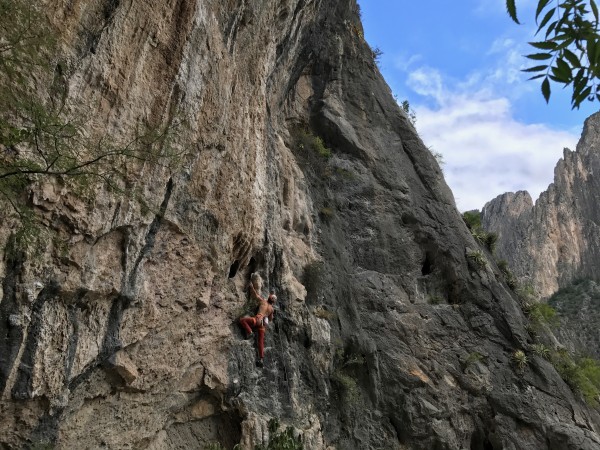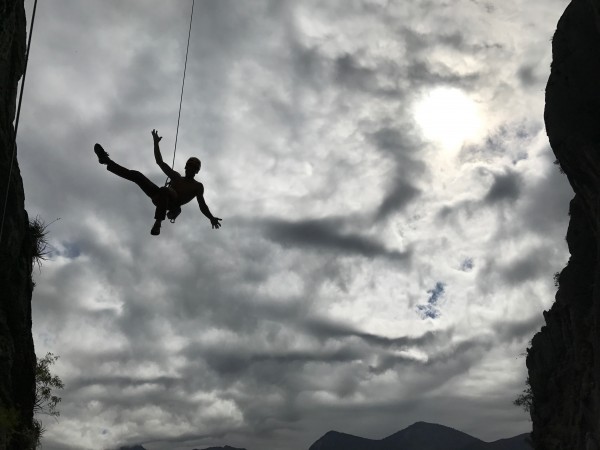2016, the year that was.
Patagonia
Been quite a wild year for me that started in the place where 2015 ended, Patagonia. As some of you may remember I had been climbing a ton of trad and alpine objectives last year getting ready for my trip to Chalten last Dec/Jan which I was going to undertake with a friend of mine. Long story short, the partner fell through, I still had the time off from work and a ticket so I ended up down there regardless. It did not go as planned. Patagonia is no place for a blind date and I didn't really get up much of anything due to weather, nerves, partners, you name it. I'll definitely be back some day, though maybe not for a bit
Back to Utah
I left Argentina and Chile feeling pretty exhausted, physically and mentally. I was at the time utterly and completely ďblown outĒ I came back to UT and charged back into a lot of the same training and climbing I had done in the summer and fall prior to Patagonia but something was feeling different. I can say that there were times in Chalten that I really felt scared, pushed to my limit in a way I did not like, and feeling exposed to risks I wasnít really willing to take. That stress stayed with me into the spring but was met with the additional stress of relationships and a new position at my job at Petzl but I kept on climbing and training for what I hoped would be a strong alpine and trad season in the Wasatch, Sierra, and Tetons the following summer. As the spring went on I found out my mother had been diagnosed with a rare form of ALS and that there was nothing to be done in terms of a cure or a slowing of her symptoms by all of the doctors she consulted in New Jersey where she lives (or NYC). More stress.
Cut forward to a morning sometime in April I believe and I was again climbing a fast simul lap up the Thumb in Little Cottonwood Canyon which is a climb I have done many times and was becoming one of my favorite routes for covering ground fast. It isnít very hard and the difficulties only crest at around 5.8 or so on the variation me and my partner had been doing for fitness. We had started climbing the roughly 10 pitch route in 2 blocks. Iíd usually lead the first 500 feet on a single rack with Bryan following and then him taking us to the top. It had rained the night before and the route was a bit wet but we decided to do it anyway and during my block, still in the dark, I slipped a foot and ended up ping ponging down the wall and hitting a ledge (my only gear in at that point was probably 80-100 ft below me) and heavily adrenalized I did a quick self assessment, called down that I thought I was ok, and finished my block. Bryan zipped up his and I was still at work by 9am. We were doing the route and descent in about 3 hours car to car by that point. This is a route that takes most parties all day or something like that.
Speed felt good. Until it didnít.
I think that fall was the only time in the 17 years Iíve been climbing I have ever fallen at that difficulty level. It was that fact that let me rationalize that idea that I never would. I was so very wrong and in the days and weeks afterwards I was increasingly reluctant for big ridge climbs, easy solos, or putting myself out there in these risky situations. I think now there was probably some sort of PTSD event going on or whatever the contemporary equivalent would be.
Stress. Work. Relationships. Family. Illness. Friendships. Close calls. More stress.
A good friend of mine and Bryan's fiancee (my climbing partner that day on the Thumb and on those big days last year) told me that she thinks there is only so much of a load people can carry at a given time and that encompasses physical and mental burdens and it was possible I had reached my limit. I was for the second time in a few months feeling utterly and completely blown out. Something needed to change, and luckily, as is often the case, going back to something simpler and more basic was what I needed.
Clipping bolts in the American West
I spent the summer and fall of 2016 sport climbing. I hadnít been very serious about it in the last few years and my skills surely showed it. I went from redpointing 5.13b five years ago to really struggling to clip chains on 5.12a by the time I started up again this summer. But week after week and night after night it was coming back to me. And it was coming back to me without the stress of injury, death, burden, fear, or any of the other baggage I had been dealing with. I still had to work my way through all of the personal issues that led me to make a shift this year but at least I wasnít working through those issues while soloing high consequence terrain or being tied to the other end of the rope my partner was counting on me never weighting. It was just climbing. Hard movement, a light pack, and no real consequences. It was simple and it was what I needed.
I started climbing a lot with another friend of mine, Mike, who had been focusing on sport climbing a ton in the last few years and we were able to really push each other to personal bests throughout the summer and fall of this year with him finally breaking through the 5.13 barrier and me getting back to redpointing 5.13b (and clipping chains on most of my old projects). The stage was set for something potentially awesome to come of all of this fitness.
The election, the goddamn election. My fall was going well, only ruined by the outcome in November. But hey at least I learned in Trump's America, anything is possible, so why not an onsite of one of the most inspiring routes I'd seen in all my days.
Down to Mexico
The first time I came down to El Potrero Chico was in the winter of 2004 and I distinctly remember the place as being overwhelming for me and one of the first places I was able to try climbing long routes unlike anything I was used to in New Jersey where I grew up and started climbing. We had no limestone, no real sport climbing, and really the only multi-pitch that was easily accessible was in the Gunks, a quick two hour drive from my house. Heading down to Mexico proved to be an easy, and cheap way to get up off the deck and try something new. It was then and is now an excellent and affordable turn key international climbing vacation for anyone so inclined.
Some things have not changed in the intervening years such as the quality of the climbing, the absolute kindness and hospitality of the locals, and of course the availability of excellent adventures. What has changed (in my opinion) is the amount of people heading down there and how that affects the cragging and the crowds. I think a major difference is that I am no longer a totally new climber with starry eyes and a lump in my throat and with a decade of experience I was able to come down with quite a bit of ambition and desire to really try something that Iíd first seen years ago and decided to save for an onsite attempt when the time was right. It ended up being a many years until Iíd tie in at the base of Sendero Luminoso (5.12+, 12 pitches)
We heard about really cheap flights to Mexico and before we knew it we booked a room down there and had tickets lined up for us to make an onsite attempt at Sendero Luminoso.
Iíd like to say we walked up to the thing and fired it and stood on top arms raised overhead like Rocky Balboa but Iíd be lying. I can say the time was right for the attempt but to summarize Arno Ilgner when he says every climb presents a certain set of challenges and you will either meet them or you wonít, and if you donít then thatís all there is to it. Train harder, plan differently, and try again.
The climbing on Sendero Luminoso is first and foremost, amazing. What it also is is incredibly sustained and not at all forgiving. Most pitches are around 165 ft and none of the climbing ever felt easier than 5.12 for me. I would say that most of the pitches I have climbed at that grade tended to have a hard move or two or a tricky sequence but not consistent difficulty. This was ultimately a major difficulty. Our first and foremost priority was onsiting the climb and having the second free the pitches as well. Second best would be leader freeing, second freeing as well.
We didnít make it. We cached gear in a mineshaft at the base so we could walk up with no packs in the morning to start our push. We had minimal gear for a bivy on top of the 5th pitch if needed and a belay seat in case we were in for long days. In the end we only made it to the top of the 4th pitch (roughly 700 ft of climbing).
Mike won the coin flip giving him the choice of pitches and he chose to start us off, meaning I had the first crux pitch, pitch two at 5.12+. We began climbing at first light and Mike worked his way up in the dead still air and insane humidity through the wet crux of pitch one, 5.12b. I was so nervous watching him knowing this was our one chance at the onsite. Both me and Mike tend to climb shorter routes, more powerful, and in all honesty at a much faster pace. Nearly dead vertical climbing does not allow that style of movement. You are slow, methodical, and on your feet for insanely long period of time. Onsiting complicates it as you need to read the sequences perfectly, hang the draws, and not make any mistakes you canít reverse. Needless to say I felt some relief when I heard off belay from up above. Mike onsited the first pitch. I followed it rapidly and now the pressure was building. I was up for the first crux and cast off with the weight of the onsite on my shoulders.
Onsite climbing is special to me because its a referendum on everything that came before it. You have to tap into every route youíve ever done, every move youíve ever tried, every sequence youíve ever seen, and apply it to something entirely new. And you get one chance. I climbed up confidently and as I got higher and higher I began to think that this might be possible. I messed up a few sequences but was able to reverse them, at the cost of some energy, but onwards I went. Then high on the pitch I got stumped, and ended up trying a few things but none of them worked. In the end the sequence I needed to work had a slopey hold I couldnít make use of. But I wasnít going to quit. That wasnít why I wasnít going to send this pitch. I was either clipping chains or leaving everything up there. I fought it out and in the end committed to best of the worst possible options and went for it. The rope went tight, and I found myself on the end of it. My onsite journey was over.
Mike still had his chance for a flash. I lowered to the belay handed over the remaining draws and gave him as much beta as I could. And just like that with a lot of fight and a ton of sweat, he did it. He flashed the second pitch, and also flashed the hardest pitch of his life. What a guy. It was awesome to watch. I came up seconding but was feeling worked over having now had to climb that pitch a second time (the price you pay for falling at the top of 165ft pitches), and ended up falling up top again but chose to just keep going and thus ending our ability to say we team freed. I was really screwing us over.
Pitch 3 is another long 5.12 pitch and because I had given the lead over to Mike on pitch two, I was up again. Onsiting hundreds of feet off the ground in Mexico with sounds of Ranchero music blaring below and pigs being slaughtered echoing from the arroyos below. Same deal, push the highpoint, read the sequences, down climb, reverse, go up. FALL. Fail. I didnít onsite the pitch, and Mike didnít flash it. The team free was over and with it the main goal of the trip and the pressure it entailed. I was able to redpoint the pitch on my next attempt and Mike freed it on TR. Pitch 4 eased up a bit at what I guess Iíll call 5.12- but really they all felt similar and hard. This pitch climbs through some blocks and other choss that was starting to wig us out and the day was getting late. Mike was able to onsite the pitch and I freed it on TR as well and arrived at the belay pouring sweat and ready for a conversation.
The conversation basically was this. We didn't onsite it, we didn't flash it, we aren't team freeing it. I think we can probably send the next pitch (5.12-) but maybe not in the best style or the safest style and we still need to get down if we aren't taking it to the top. It's funny how much physical exertion begins to wear at your mental faculties. We weren't climbing as smoothly or confidently as we had been that morning, and our belay stations were frankly getting increasingly disorganized. We were proud of the effort, and still wanted to get some climbing done in the next few days so we decided not to continue digging a hole in this exertion deficit. We bailed and were having margaritas within the hour staring up at the wall we just failed on.
Sendero is a very public trumph or failure. It sits above the main road and all of the campgrounds. My flair for bright European colors and loud screams of exertion certainly put us on the radar that day. It was nice to hear from the few people who knew what we had attempted to do that it was good of us to try.
I ended up spending that last few days down there just climbing a ton and having a good time. Mostly single pitch routes and sampling some classics. Took a fitness lap up the moderate Yankee Clipper one morning before Mike's wife flew in. Managed to nearly deck when a block pulled out on another climb. Managed to eat a ton of amazing food and really finish out the year relaxed mentally and exhausted physically. By the time I made it back to SLC in the afternoon of the 31st I had only one more goal left for 2016, ring in the new year on NYC time (I am from the east after all and don't want to stay up late). But with everything that happened in the 12 months prior to that and the exertion of the previous days, I failed at that goal as well. Better luck next year.
At 9:30 MST I fell into the deep embracing dreamless slumber of the exhausted, ready to start it all again come morning.
